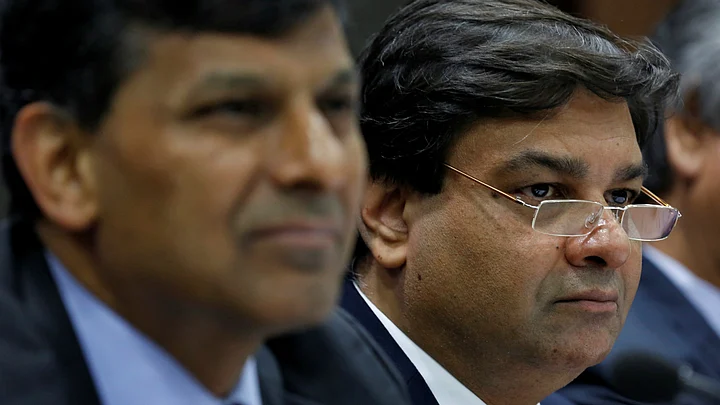Urjit Patel quit as the governor of the Reserve Bank of India about nine months before his three-year term ended. Patel’s term spanned a period when inflation was relatively stable, but growth gyrated to decisions such as demonetisation and the implementation of Goods and Services Tax (GST).
Financial markets, over the last two years, responded to a host of factors domestically and globally. Bond yields and the currency markets have both seen bouts of volatility. Here’s how the economy fared during Patel’s term:
Range-Bound Inflation
Patel is the first governor to have presided over a monetary framework driven by the Monetary Policy Committee. Inflation over the last two years has been stable within the flexible inflation target of 4 (+/- 2) percent assigned to the committee. Lower oil prices for most of his tenure and subdued food price inflation, together with a moderation in inflation expectations have helped in keeping price pressures in check.
Ups & Downs of Growth
Growth trends have been more choppy.
GDP growth slipped to a three year low of 5.7 percent in the first quarter of 2017-18, impacted by the lingering impact of demonetisation and the teething problems during the implementation of GST.
Since then, growth has recovered. It shot up to 8.2 percent for the first quarter of the current financial year before moderating to 7.1 percent for the second quarter.
Rate Hikes Begin
While inflation has been moderate compared to historical standards, the MPC started hiking rates earlier this year with the intention to bring down inflation to near the 4 percent mark.
Two rate hikes have been announced this year, after a period of steady interest rates. The monetary policy stance is one of calibrated tightening, suggesting further rate hikes can’t be ruled out. However, recent downside surprises have led the MPC to maintain a status quo with the possibility of reverting to neutral stance in the MPC’s next meeting in February 2019.
Banking Indicators Remain Worrying
Patel has continued the process of cleaning up bank balance sheets which began under former Governor Raghuram Rajan. While the recognition of bad loans is in its final stages, resolution remains slow.
Gross non-performing assets of banks rose to 11.6 percent of the total advances in March 2018 from 10.2 percent a year ago, according to data from RBI’s Financial Stability Report. In order to curb further weakness, the RBI has imposed a tougher stressed asset framework and a corrective action regime on banks—both of which have become points of dispute between the government and the central bank.
Bond Market Volatility
Bond markets were volatile through Patel’s tenure.
Demonetisation sent yields tumbling due to excess liquidity being parked in government bonds. As a consequence, bond yields hit a low of 6.18 percent in November 2016. Yields, however, rose after the cash deposited in banks was withdrawn.
In contrast yields surged starting the second half of last year due to concerns about fiscal slippage and rising inflation. Those concerns have eased partially in recent months with inflation falling below expectations and the government assuring markets that it intends to meet its fiscal deficit target of 3.3 percent of GDP for the current year.
Rupee: Record Lows Before Reversal
The rupee breached the 74 mark against the dollar for the first time this year, due to widening current account deficit and rising crude oil prices. With a 13 percent decline, the rupee has been among the worst performing Asian currencies this year before a reversal largely on account of fall in crude prices.
Contrary to expectations, the RBI has not stood in the way of rupee depreciation. While it has intervened through sale of forex reserves, the RBI has said that interest rates are not a tool for currency defence. No special measures like the foreign currency non-resident deposit scheme introduced in 2013 have been invoked yet either.
(This article was first published in BloombergQuint, and has been republished here with permission.)
